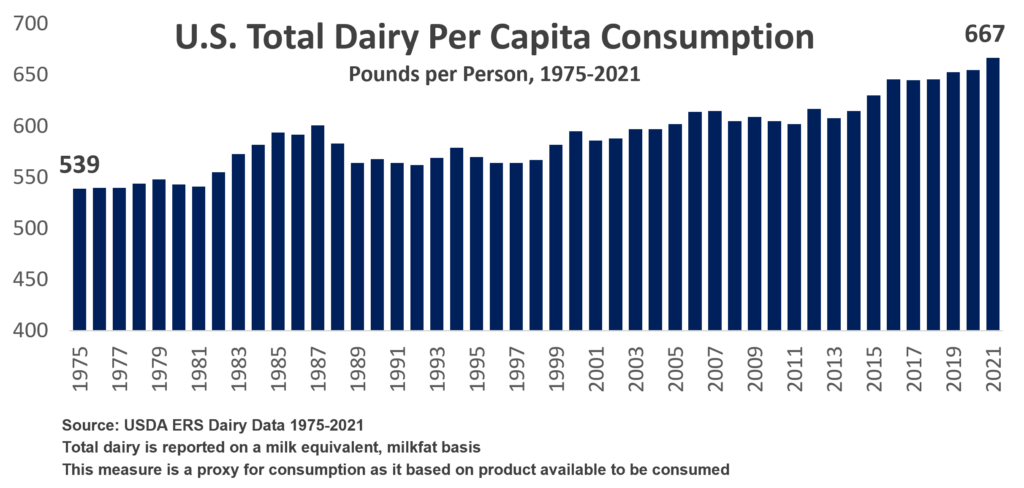ARLINGTON, Va. and WASHINGTON, DC – Representing dairy farmers, cooperatives, and processors, the National Milk Producers Federation (NMPF) and the International Dairy Foods Association (IDFA) issued the following joint statement in response to USDA’s proposed changes to the Special Supplemental Nutrition Program for Women, Infants, and Children (WIC) released today:
“It is unfortunate for WIC participants that the proposed rule would decrease access to dairy products and the unique nutrient profile they provide, especially considering the current Dietary Guidelines for Americans (DGA) note that a staggering nearly 90 percent of the U.S. population does not consume enough dairy to meet dietary recommendations. At a time of rising food costs and high food insecurity, we should focus on increasing access to a wide variety of healthful, nutrient-dense, and affordable foods, including both fresh produce and dairy products. It’s disappointing that the proposed rule would limit WIC family purchasing power for nutritious dairy foods, particularly at a time like this.
“WIC is central to helping ensure pregnant women, new mothers, infants, and children have access to the nutrients needed for growth and development at the critical life stages surrounding pregnancy, birth, and early childhood. The vast body of nutrition science demonstrates that nutritious dairy products like milk, yogurt, cheese, and cottage cheese are especially important in the diets of women, infants, and children. Dairy is a source of 13 nutrients, including three of the four nutrients of public health concern as noted by the DGA, which is why dairy has always played a significant role in the WIC program.
“NMPF and IDFA commend USDA for suggesting approaches to make the nutrient-dense food provided by the WIC program more accessible, including expanded options for yogurt and cheese varieties and for proposing WIC participants be able to purchase these dairy products in a wider variety of product package sizes that are more commonly found in grocery stores. We also applaud USDA for its continued commitment to nutritional equivalency in substitute products, rejecting those that do not provide an equivalent nutrition package, as recommended by the DGA.
“We look forward to working with USDA to modernize the WIC food package for eligible families to access nutrient-dense milk, yogurt, and cheese varieties that are a part of their everyday diets and accessible in neighborhood stores, thus fulfilling the program’s nutritional objectives. IDFA, NMPF, and our members will advocate against reducing the amount of nutritious dairy foods provided through WIC in USDA’s final rule because we are committed to reducing food insecurity, malnutrition, and diet-related disease while improving health outcomes by making it easier for all Americans to access healthy, affordable foods, including nutritious dairy products. We hope USDA will work to achieve these same objectives as they develop a final WIC rule, which, given dairy’s unique nutrient package and incomparable role in nourishing WIC participants, will require USDA not to decrease access to dairy in the WIC program.”







